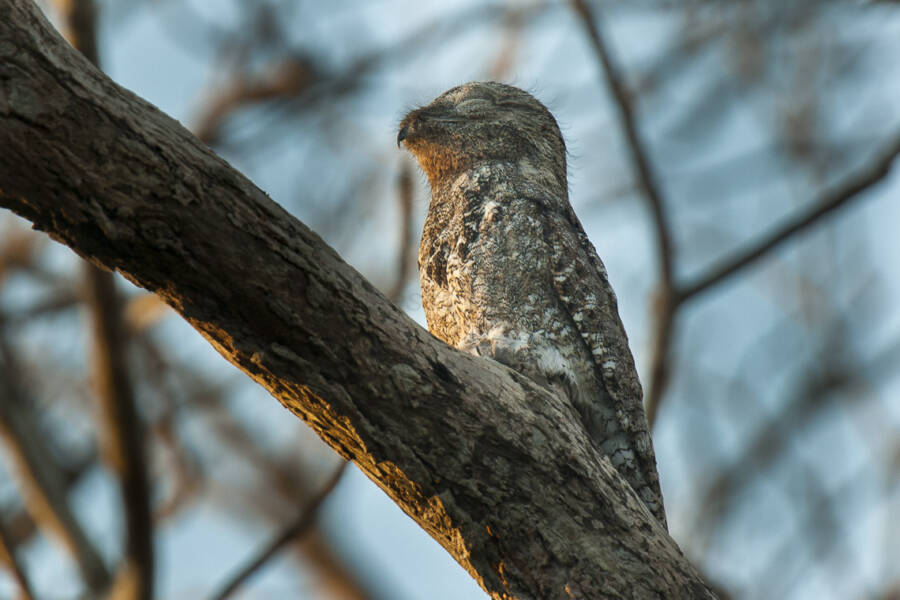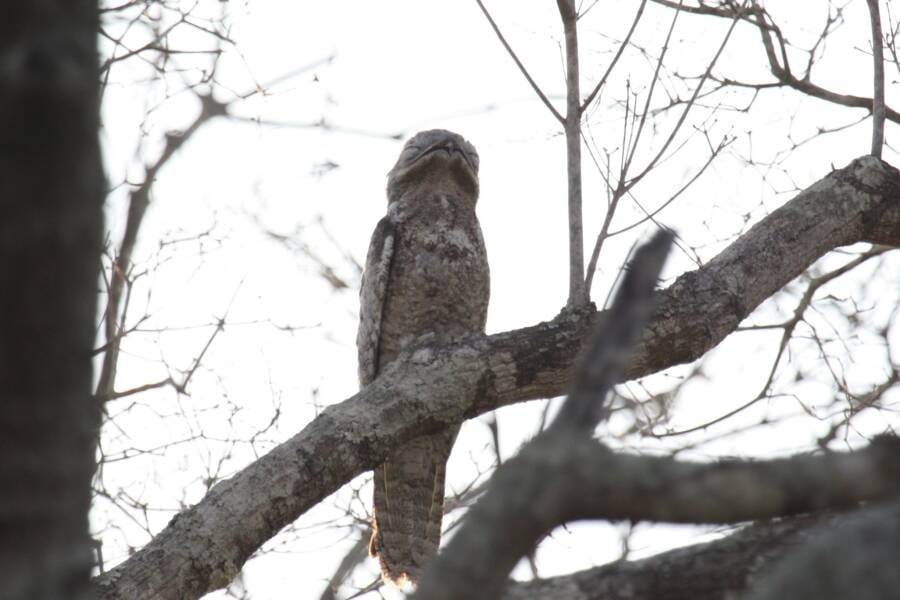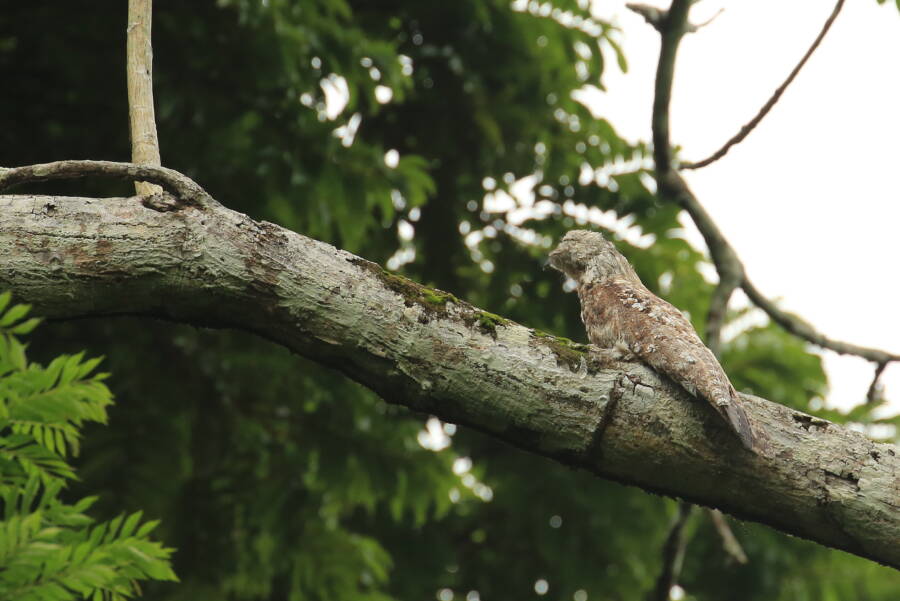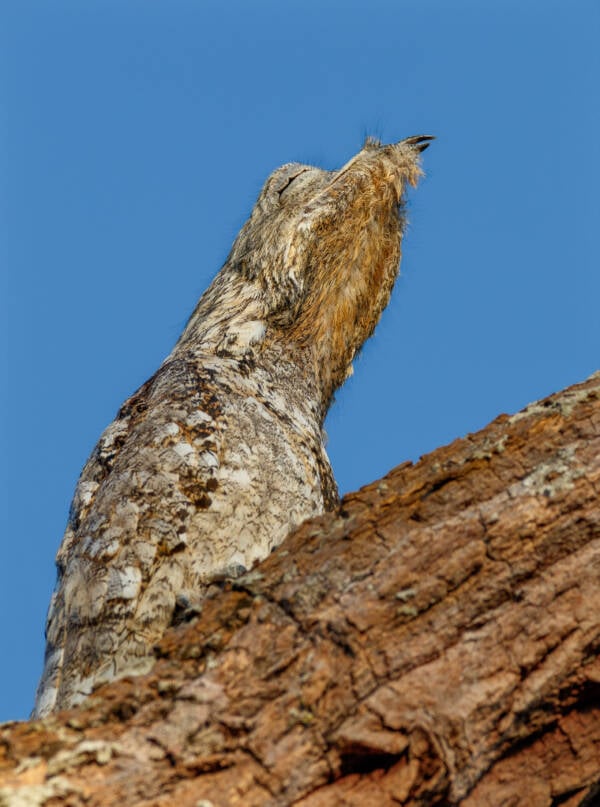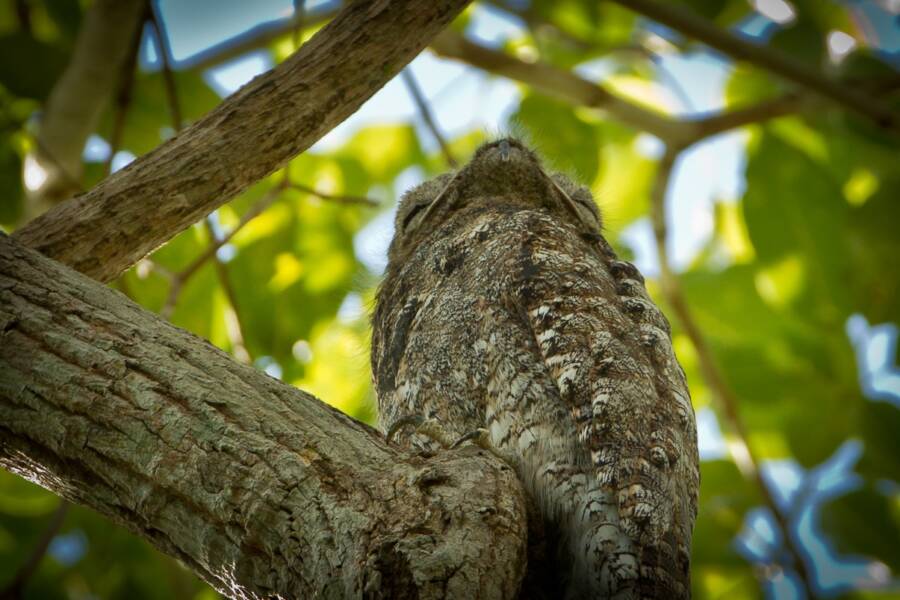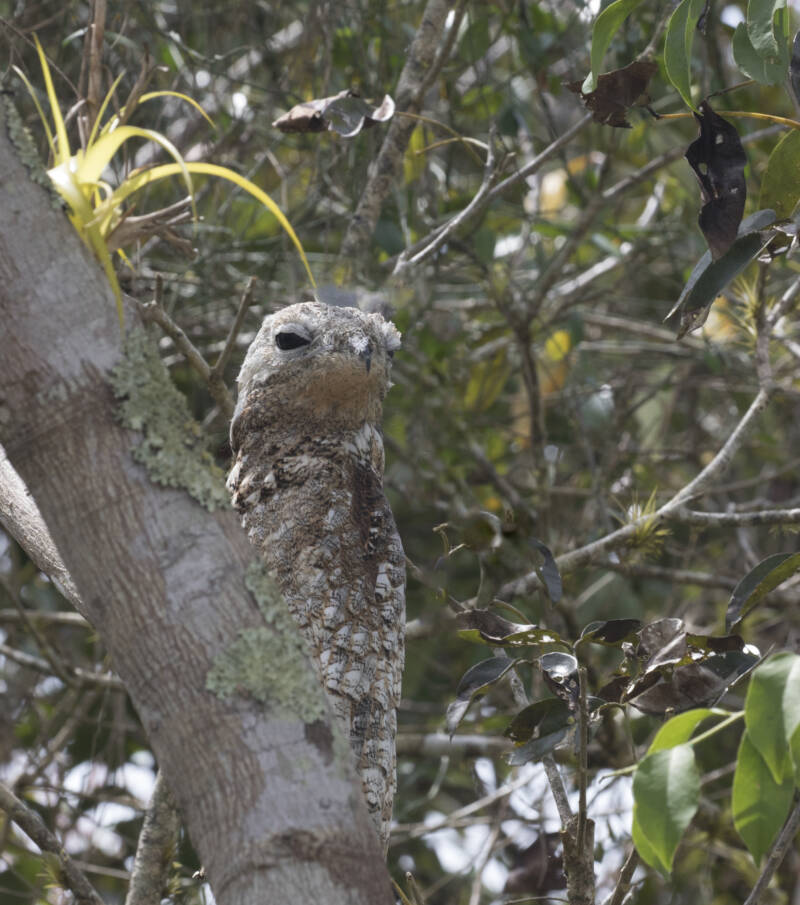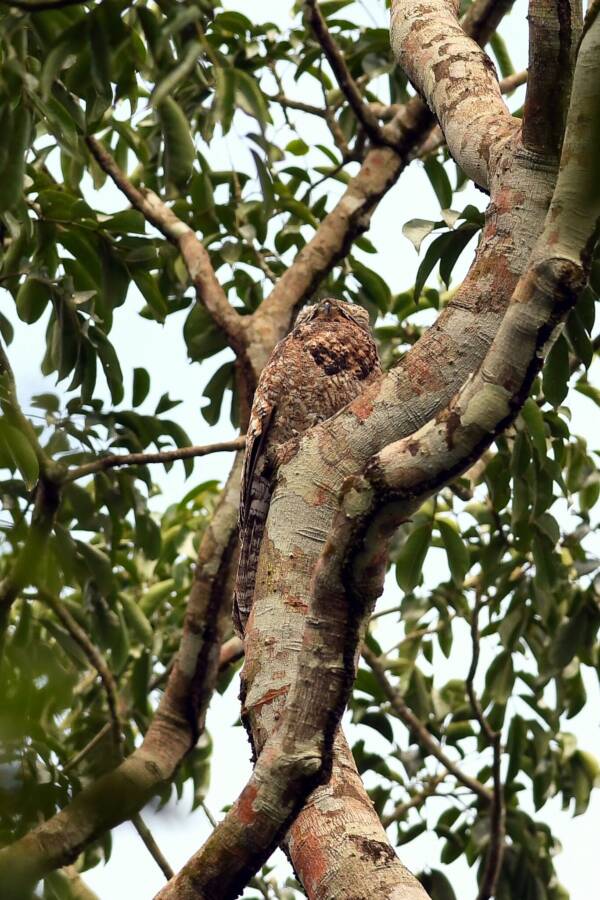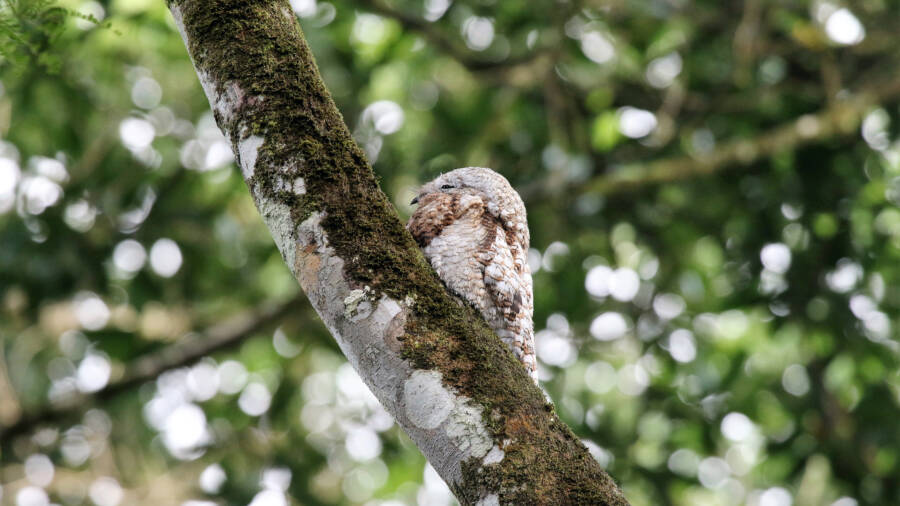The Bug-Eyed Great Potoo
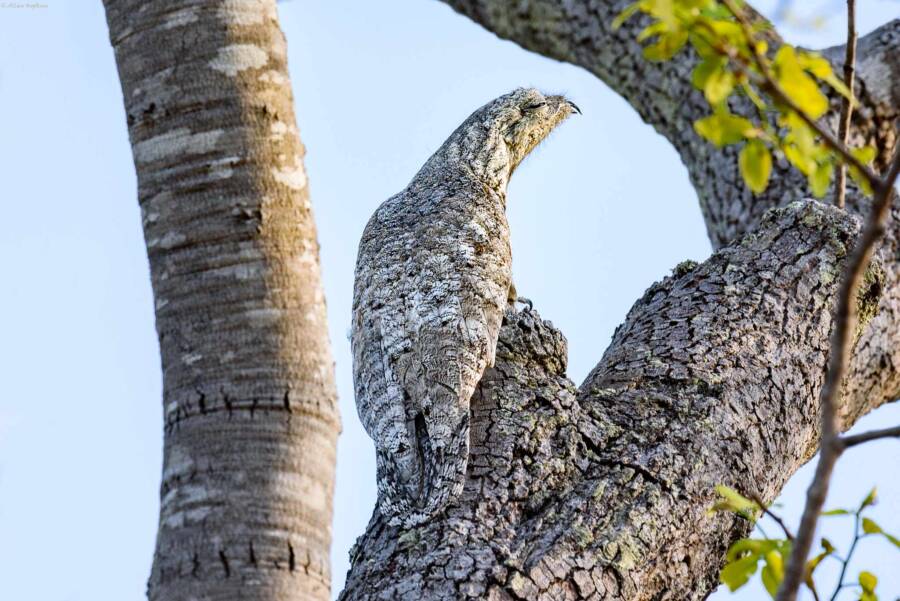
Allan Hopkins/FlickrThe great potoo camouflages perfectly into the trees and can sense incoming predators even while asleep.
The great potoo is not only nocturnal, but it also has eyes so large that they take up most of its skull. With remarkable night vision and abnormal eyelid slits — this deadly little creature can sense incoming predators even while asleep.
Otherwise known as Nyctibius grands, the goggly-eyed avian is the largest member of the Caprimulgiformes. This order of birds includes goatsuckers and frogmouths. With eyes as big as ping pong balls and a comically large mouth, the odd-looking potoo is surprisingly stealthy.
Standing up to 24 inches tall with a wingspan of around 28 inches, this scary bird has some remarkable evolutionary traits by its side. With mottled feathers that help it blend into the trees, this bird is naturally camouflaged from predators — and hides in plain sight during the day.
Once the sun sets, however, the great potoo springs into voracious action. Insects, from moths to beetles, are suddenly sucked out of the air by this stealthy critter. Those same unfortunate victims could have unknowingly passed the predator by day — when it looked exactly like an inanimate tree stump.
In addition to its strategic plumage, the great potoo is an impressive vocalist. Their haunting calls comprise the soundscape of South and Central American rainforests, with a "potoo" wail so distinct it became the bird's monicker.
Monogamous with no dimorphism among the species, great potoo sexes are so similar that scientists haven't yet determined how the genders divvy up their time at the nest. What is clear, however, is that nesting season occurs during the wet seasons of their regional habitats.
While one researcher observed a young potoo wandering independently at four weeks of age, other potoos have required up to 50 days before their first trial flight. Generally, young offspring are only sheltered for the first half of their 45-day nestling period, at which point their plumage comes in.
Though these birds pose no threat to humans, one has to admit that their general identity is a rather harrowing prospect: camouflaged into the forest, a predator with wide eyes and an even larger mouth separates itself from the branches — and gulps up unsuspecting critters whole.

